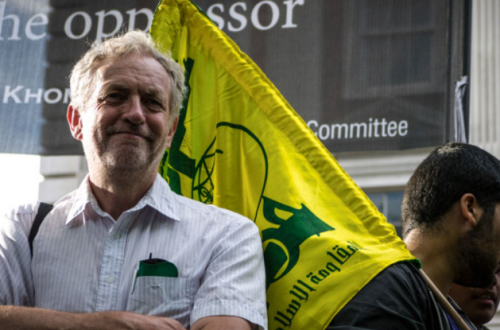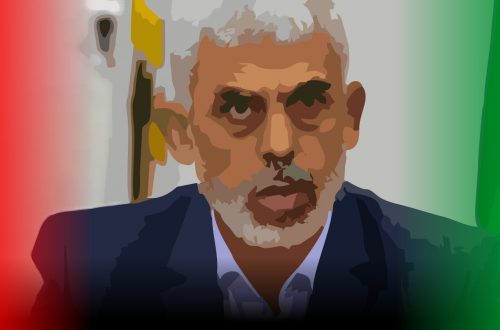Cross-posted from Aymenn Jawad al-Tamimi
To preface, the successful operation that recently took out Osama Bin Laden (OBL) deserves great credit, and the killing of the founder of Al-Qa’ida is undoubtedly of some symbolic value. For so many jihadists, he has served as a figure of charismatic inspiration. However, in the present state of affairs, the death of OBL is unlikely to translate to anything significant in the fight against Al-Qa’ida and other like-minded Islamist militant groups. The reasons for this are numerous.
First, Al-Qa’ida has evolved well beyond a group with military bases in certain countries and under a highly centralized leadership. Today, Al-Qa’ida is a loose collection of localized branches that merely share the common cause of OBL’s doctrine of establishing the Caliphate and launching a global, offensive jihad to subdue the world under Islamic law.
No one can seriously suggest, for instance, that Tanzim Qaidat al-Jihad fi Bilad al-Rafidayn (Al-Qa’ida in Iraq or “AQI”) or the Yemen-based Al-Qa’ida in the Arabian Peninsula (AQAP) has been taking orders and plans for operations from OBL or a leadership based in Pakistan.
In addition, Al-Qa’ida leaders have now turned to the Internet- and Youtube in particular- as the primary means of recruiting followers. Matthew Hoh made this point in an interview with PBS back in October 2009, contrasting with the fact that there are hardly any Al-Qa’ida members in Afghanistan (it is estimated at most that there are around 100 fighters currently in the country).
Meanwhile, Steven Stalinsky of MEMRI has more recently provided an in-depth investigation into how prominent Al-Qa’ida members such as Anwar Al-Awlaki have made Youtube their new recruitment centers. One plausible explanation for this is that, as scholars such as Saad Eddin Ibrahim and Daniel Pipes have demonstrated repeatedly, the majority of Islamist militants come from relatively well-off backgrounds, in which, with access to the Internet, they have had the opportunity to ponder questions of religious identity and circumstance.
Al-Awlaki has some 2500-plus clips on Youtube- including lectures, sermons and compilation videos supporting his jihadist philosophy- and has attracted well over three million views. In particular, it should be pointed out that a March 18, 2010 audio entitled “To the American Muslims”- the first that appeared since he went into hiding- was put up directly on Youtube instead of the other jihadist websites that normally host such content.
Moreover, his infamous “44 Ways to Jihad” (a document published by Al-Awlaki on January 5, 2009) has been posted on dozens of Youtube pages, and was cited in at least two major terrorism cases in the United States in the summer of last year.
Specifically, Paul Rockwood, an Alaskan convert, created in cooperation with his wife a hit list of local media, religious officials and military figures who had supposedly “desecrated Islam.” Inspired by a posting of “44 Ways to Jihad” on Youtube, he pled guilty on July 21, 2010. Faisal Shahzad, who attempted to bomb Times Square, and the 7/7 bombers in London were similarly driven to full-blown terrorism by Al-Awlaki’s online presence.
Who needs OBL when you have people like Al-Awlaki on the Internet? Is it not clear how Al-Qa’ida has been able to function efficiently without direction from OBL? Indeed, as Matthew Hoh noted in his resignation letter in protest over the current American strategy in Afghanistan, Al-Qa’ida attacks after 9/11- such as the Madrid and London bombings- were as a result of increasing reliance on the Internet and abandonment of the concept of centralized, conventional military bases, “primarily planned and organized in Western Europe.”
This illustrates that the threat of Islamist terrorism is not limited to traditional geographic and political boundaries. Hence, it is evident that a significant risk factor exists in the growing presence of Muslim populations in Western Europe and North America.
A second major point is tied to an analogy used by scholars such as Raymond Ibrahim, who compares taking out individual Islamist militant leaders in dealing with the problem of Islamist terrorism to “a doctor temporarily treating a sick patient’s symptoms without eliminating the cause of the sickness.” Of course, prominent Al-Qa’ida members must be killed or captured, but though OBL is dead, his ideology lives on.
In fact, the now de facto Al-Qa’ida leader Ayman Al-Zawahiri summarized this point quite well when he affirmed as follows:
Jihad in the path of Allah is greater than any individual or organization. It is a struggle between Truth and Falsehood, until Allah Almighty inherits the earth and those who live in it. Mullah Muhammad Omar and Sheikh Osama Bin Laden — may Allah protect them from all evil — are merely two soldiers of Islam in the journey of jihad, while the struggle between Truth [Islam] and Falsehood [non-Islam] transcends time. [The Al-Qa’ida Reader, pg. 182]
Unfortunately, it seems that Western politicians still see taking out militant leaders alone as the key to cracking down on Islamist terrorism. It is difficult to forget the jubilation and widely echoed belief amongst all major American political leaders that the killing of Jordanian Al-Qa’ida leader Abu Musab Al-Zarqawi in Iraq would deal a massive blow to AQI. Yet even today, AQI carries out dozens of attacks each month and still proves a major problem for Iraqi security forces, its capabilities not weakened because of Al-Zarqawi’s death.
On the contrary, the foremost necessity is for mainstream Islamic religious authorities to formulate convincing counter-interpretations of core Islamic texts to tackle head-on the broad elements of traditional Islamic theology- particularly as regards the doctrine of establishing a Caliphate and offensive jihad- that jihadists can use to justify their aggression.
Only this measure- along with effective counter-terrorism and genuine, gradual democratization in Muslim countries- can significantly hamper the threat of militant Islam as a whole in the long term.


